17 Smart Sales Goals Examples to Set & Achieve Targets

When I was young, whenever someone came over to our house they never failed to ask this one question, ‘So…what are your goals in life?’ I’m sure you were faced with similar questions as well. At first, I despised the question because I never had any goals set. If I said, ‘I don’t have any goals set at the moment’ they would go on and give an hour-long lecture, phew 😮💨just thinking about it is making me dread those times 😆.
Later in life, I understood the importance of setting goals by seeing people without any goals struggle in life while people with clear set objectives lead a motivated and contentful life.
Now, goals are important in our personal life and the life of sales is no different. There are goals in the world of sales and they have their importance… Now you might be wondering what exactly these sales goals are and how they are important to you.
What are sales goals?
Sales goals are objectives or targets that your company or team wants to achieve in a specific period of time. These goals can be of different types for instance
Revenue goals
- Increase the quarterly income by 10%.
- Increase the revenue generated per sales rep by $1000 per week.
Customer satisfaction goals
- Increase customer satisfaction by reducing the wait time on calls to 2 minutes by year-end.
- Reduce response time for customer complaints on social media platforms to 30 minutes this quarter.
Customer acquisition goals
- Increase customer acquisition by 15% this quarter.
- Increase signups via Facebook ads by 30% in 3 months.
These are just a few examples to go with a few types of sales goals. I will discuss more examples of SMART sales goals for your sales reps to help you set & achieve sales objectives with ease.
Why do you need sales goals?
Now that you understand what sales goals exactly are you might be thinking, Why do I need to spend time setting these goals when I can just simply work to get my targets met?
Here’s something I say to my friends that can answer your question, ‘if you can’t take the time and effort to write your goals down, how are you going to achieve them?’
Goals are essential to driving success to your business, people with goals are 10 times more likely to succeed than those without goals, and according to a study at the Dominican University of California, you are 42% more likely to achieve your goals if you write them down.
Does this mean just setting random goals as you wish is going to help you achieve them?
Most certainly not, imagine you have an online business selling tender coconut, and now you just set a goal like ‘increase sales by 200%’ Is it possible to find success now? The simple answer is NO!
There are numerous moving parts like the availability of coconuts, the ability to store these coconuts, the campaigns to promote sales for your coconuts, and many more.
There is a proper way to find success by setting goals. Let me tell you about it.
How do you create SMART sales goals?
So here’s how you can find success by creating a SMART goal. Let me explain what a SMART goal is with an example, “Employ our in-house marketing team to increase the online sale of tender coconuts by 30% in 3 months using Facebook ads, targeting our existing customer profiles”.
This is an example of a SMART goal. For your goals to be considered as SMART goals they need to be
Specific
You should be specific and clearly define your objective i.e. what is it that you want to achieve, how you are going to do so, and who is responsible for it. Like, use the marketing team to increase sales by 30% in 3 months.
Measurable
The next important criterion is to quantify your goal and set an end target. Imagine a race without a finish line, not possible right? So set a finish line by quantifying what you want to achieve. Just setting a goal like ‘increasing sales’ is not enough; a goal must be measurable like ‘increase sales by 30%’. So, think about using a goal tracker to monitor your progress and stay on track.
Attainable
The goal you set must be realistic and attainable. For example, a 30% rise in sales compared to a 200% rise is much more realistic, right? Setting attainable goals is important as setting goals that are challenging but achievable leads to 90% better performance.
Relevant
Your sales goal should be relevant in the sense that it should go hand in hand with your business objectives. If your business objective is to increase customer satisfaction you can’t set your sales goals to increase profit by 40%.
Time-bound
Your sales goal must be time-bound, you just can’t set a goal without a time limit like ‘increase sales by 10%’ as it can affect your progress adversely. You have no way to measure the progress of your sales goal if you don’t have a time limit. A better sales goal is ‘increase profit by 30% in 3 months’
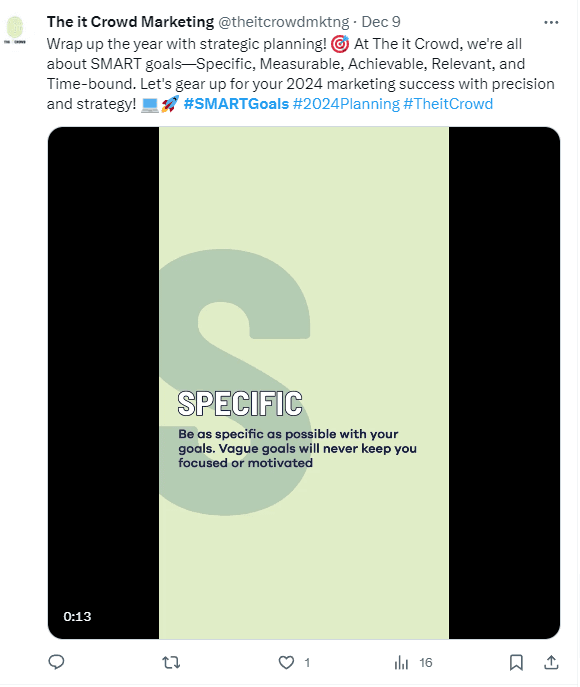
Remember just setting a SMART goal is not enough, you must have a proper action plan and a way to measure your progress. Like a visual pipeline and a sales automation tool that can help you easily see the progress you have made and automate your sales process.
There are amazing sales tools offering pipeline management features like Zixflow which offers a customizable easy-to-use drag-and-drop visual pipeline that is specific to your industry and an efficient sales automation tool.
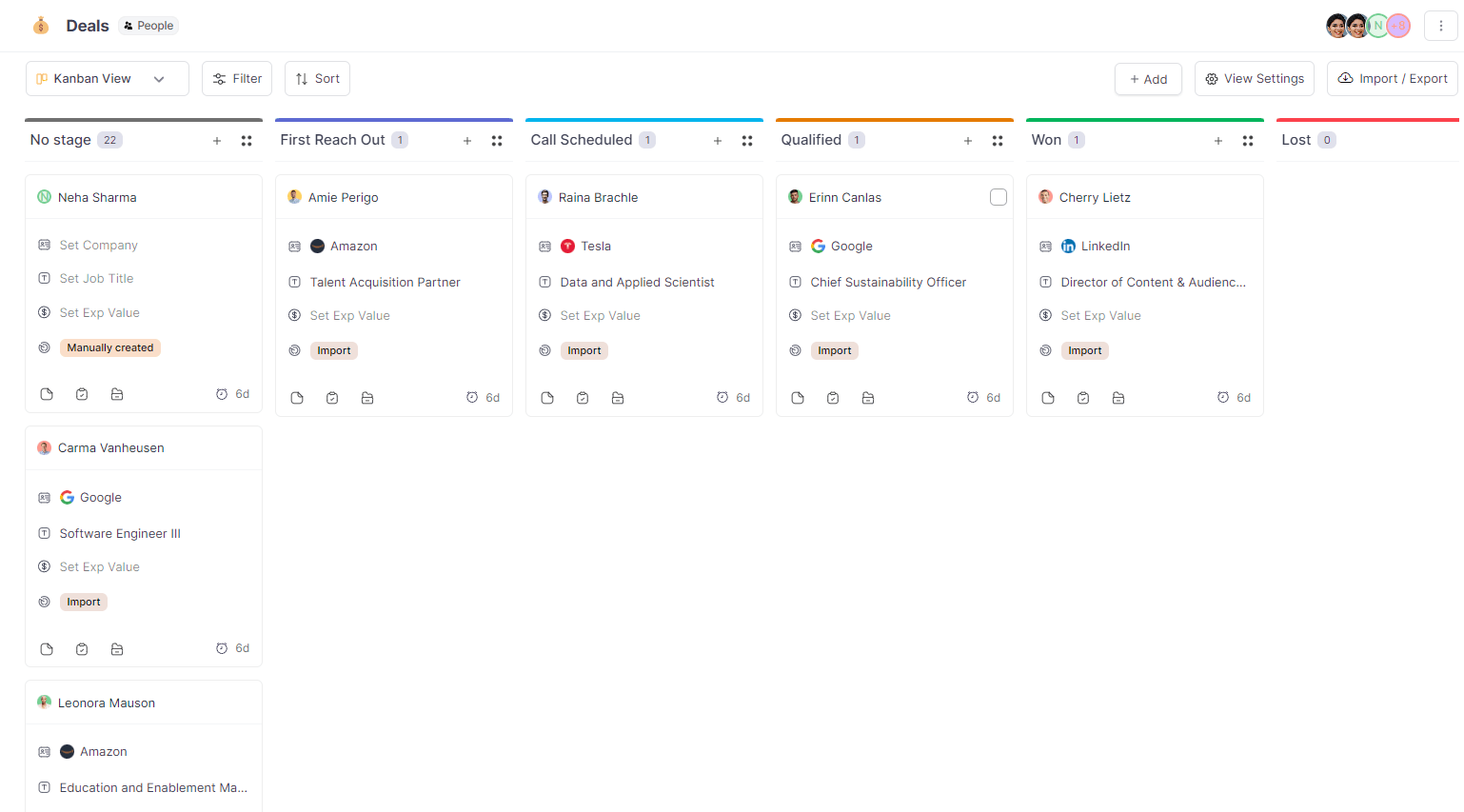
17 SMART sales goals examples
Now that you understand what sales goals are, why you should have sales goals, and how to create Smart sales goals let me give a few examples of SMART sales goals that can help you set and achieve aspirational targets
Increase revenue
Revenue goals focus on increasing the gross or net profits of your company, which are reflected in the company's income statement. These goals can be set for the whole organization or individual sales reps with varied time frames.
A few examples are:
- Increase overall revenue by 10% by next month.
- Increase revenue generated by each sales rep by $2000 next quarter
- Increase the net profit to $4 million next year
Generate more leads
Lead generation goals aim to increase the amount of leads generated to ultimately increase profits. A few examples of lead-generation goals are
- Increase lead generated through web forms by 10% in the next 5 months.
- Increase leads generated through social media ad campaigns by 30% next quarter.
- Generate 100 leads per week in the next month by automating the lead generation process.
You can achieve these goals with ease by automating your lead generation process by using tools like Zixflow which offers customizable forms for lead generation.
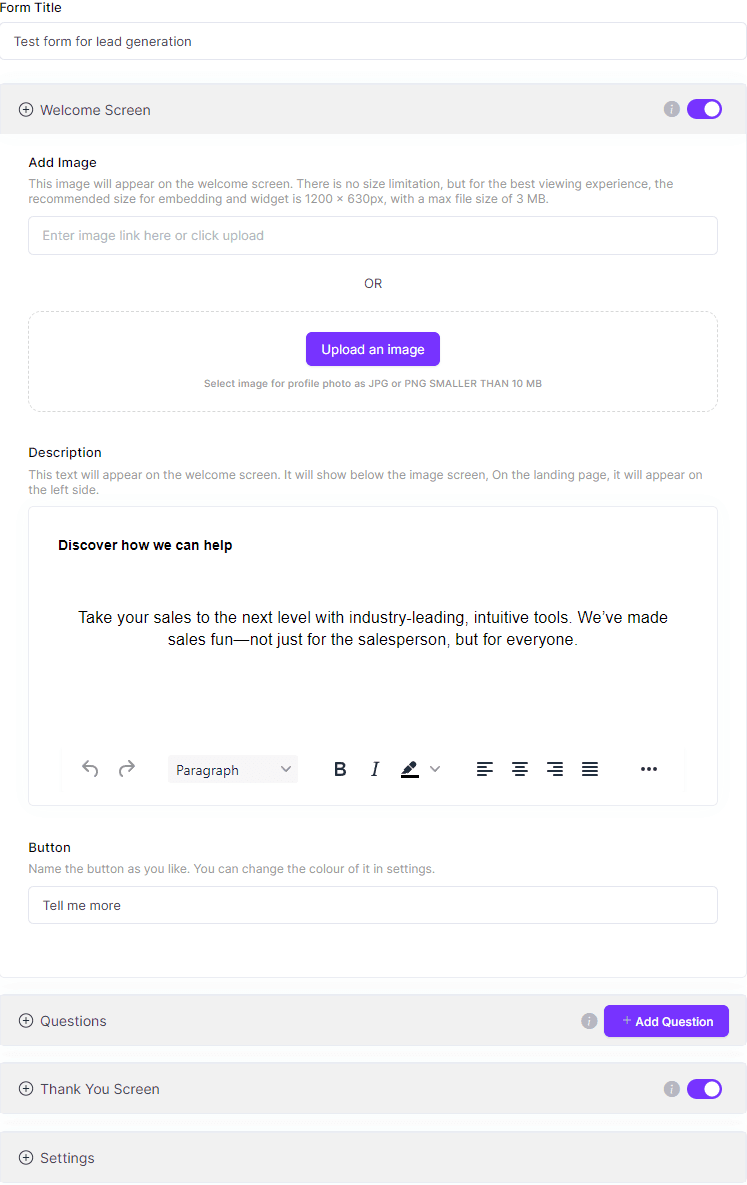
Improve customer satisfaction
Customer satisfaction is vital in any organization, customer satisfaction goals generally aim to increase customer satisfaction in different ways, a few examples are
- Increase customer satisfaction by decreasing the waiting time on customer calls to 2 minutes by this month
- Decrease response time to 30 minutes on social media complaints.
- Increase the positive entries on customer feedback forms by 20% next quarter.
Increase booking rate
Booking rate is vital in increasing conversion rates as when you book a meeting with your prospects, you get their valuable time. So goals related to booking rates aim to increase the booking rate of each sales rep. For example
- Increase the booking rate by 30% in the next quarter by being timely with responses and queries.
- Increase bookings of each sales rep by 10 next month
Schedule more demos
Demos are a great way to convince a lead to make them a paying customer as they get a hands-on feel and experience of the product or service you offer. Here are a few examples of scheduling demo goals
- Increase the demo booked through emails by 12% by next month using simple sales psychology to make the customer feel valued like personalizing the emails.
- Increase the demos booked to 40 per month by optimizing the landing page to have a 60% CTR on the call to action.
- Increase the demos booked through social media by 5% next month by posting 30 videos per week.
Increase cold calls
Cold calls in sales increase conversion rate by adding a personal and human touch to the leads. Sales goals set to increase cold calls aim to increase cold calls per person to increase the overall lead generated and profit made. Here are a few examples of coal call goals
- Increase the cold call made by each sales rep to per day in the next month.
- Increase leads generated through cold calling by 10 per day for each sales rep in the next week.
Close more deals
These goals regarding closing deals can be made with the whole organization or individual sales reps in mind to boost productivity. To help close more deals you can use the best sales cadence tools in the market like Zixflow to build a successful sales cadence.
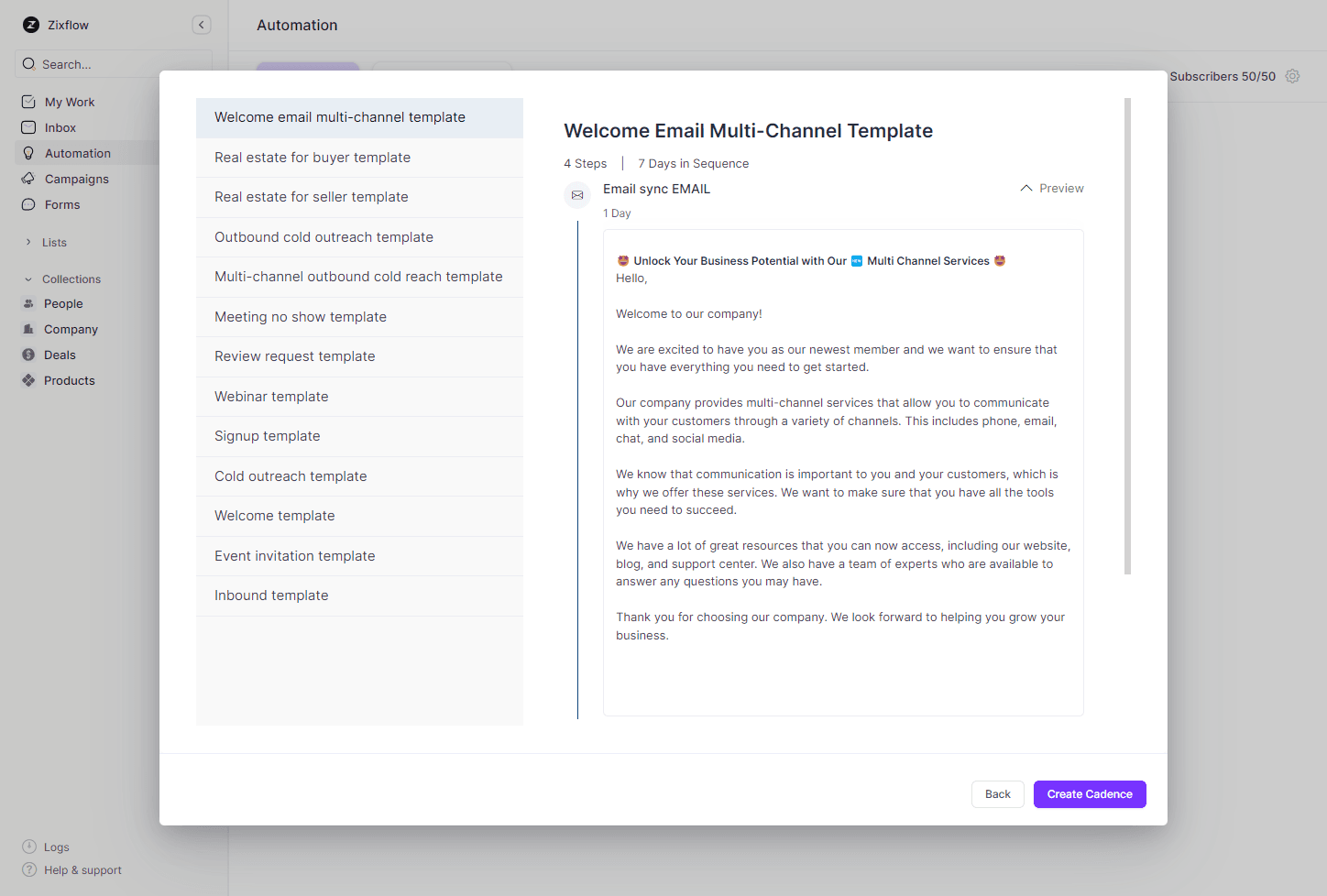
A few examples of deal-closing goals are
-
Increase the deal closed throughout the organization by 10% in the next 6 months by training sales reps.
-
Increase the deal closed by each sales rep to 20 in the next 2 months.
-
Increase conversion rate by 5% next month by optimizing the sales pipeline stages.
Improve lead response time
Lead response time refers to the time taken by your sales reps to respond to a query or activity of a lead. This is vital in determining the conversion rate of your team. Your lead response time goals can be something like this
- Decrease the lead response time on email queries to 1 minute next quarter using sales automation tools.
- Decrease the lead response time on web forms to be instantaneous using sales automation tools.
Sales cycle
The sales cycle refers to the time taken to convert a lead to a customer, a shorter sales cycle implies more revenue in a short time. Here are a few examples of sales cycle goals
- Reduce the time taken to convert each lead to 3 weeks in the next month.
- Close deals 30% faster than the last quarter for the next one.
Reduce customer churn
Customer churn refers to the number of customers who stopped using your product or service. This is bad for any business and setting a goal to address this problem is necessary. You can set a goal like
- Reduce the customer churn rate for your premium plan by 50% by the next year
Improve email marketing
Email marketing is a great way to find and engage with leads it is becoming a trend in B2B sales. I would also recommend taking the help of AI-powered tools like Zixflow which uses AI to help you write personalized emails that are engaging with just a click.
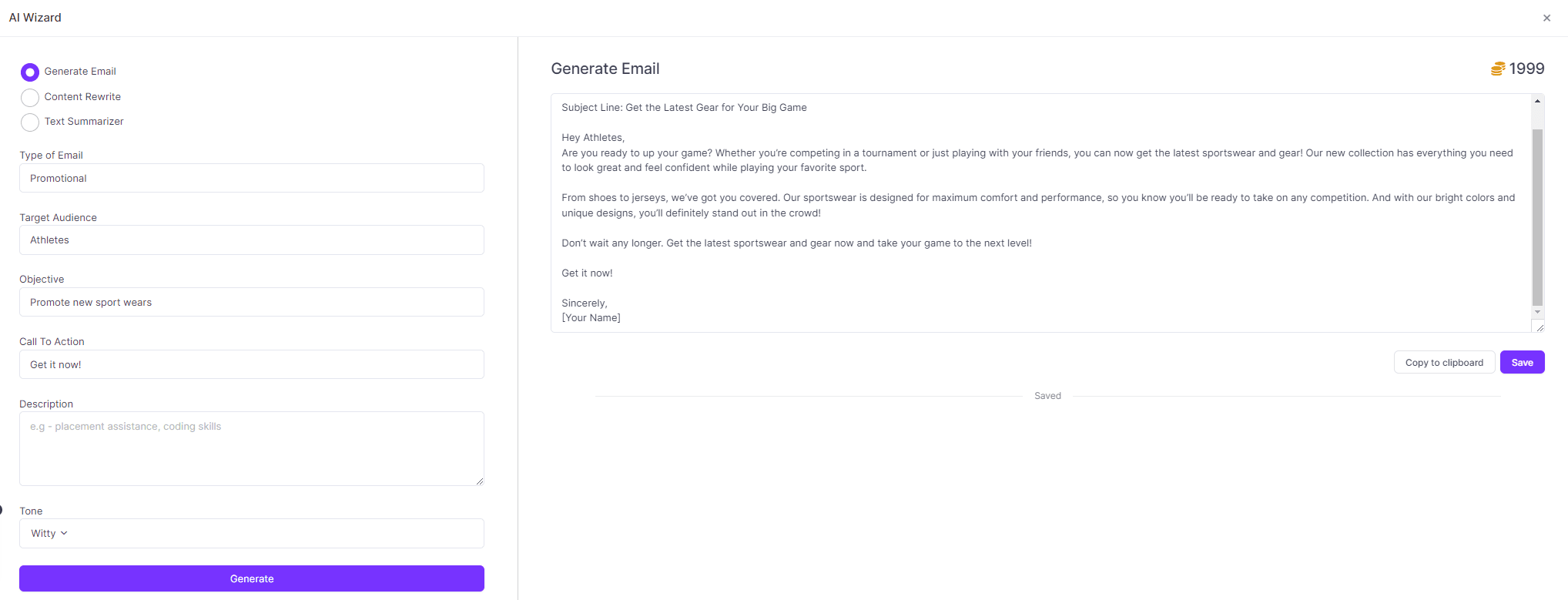
Here are a few examples of email marketing goals, you can set
- Increase leads generated through email marketing by 12% in the next quarter by personalizing emails sent.
- Have an 8% open rate of promotional emails by next month with inviting and exciting subjects for emails.
- Increase the number of leads generated by free trial emails to 300 by next quarter.
Improve NPS
NPS or Net Promoter Score is an important KPI that indicates customer satisfaction and their likeliness of recommending your product to others. Your goal to improve NPS can be like this.
- Increase the promoters by 5% next month
- Decrease critics by 10% next month
Decrease lead qualification time
Lead qualification time refers to the time it takes to qualify a lead as an SQL. This time period must be short as the quicker you engage with the lead the higher the chance of conversion. You have your goals set like this
- Decrease the time it takes to qualify leads to 2 minutes next week using an efficient lead qualification checklist.
- Decrease the time taken by sales reps to qualify leads to 1 minute by next week using lead qualification tools.
Increase annual contract value
ACC or annual contract value is the average revenue generated from a customer contract in a year.
If you have a business like Netflix that depends on subscriptions you can use AVC to set targets, here is an example of an ACC target set
- Increase ACV to $6000 per sales rep by the end of the year
- Increase ACV of India by 40% in 6 months using promotional codes as incentives and paid ads.
Increase hold rate
The hold rate is the ratio between the demo booked and the demo attended. Increasing this percentage is necessary to actually increase your chances of converting leads as what good is a meeting booked if it is not attended? Your goal to increase the hold rate might look like this
- Increase the hold rate by 50% next month by using an automatic meeting scheduler to book meetings at the client's convenience time.
- Increase the hold rate by 70% next week by setting up automated follow-up reminders via email
You can use top sales tools in the market like Zixflow to schedule meetings as it sends automated reminders to ensure that your clients attend the meeting. You can also check out our compiled list of best meeting schedulers.
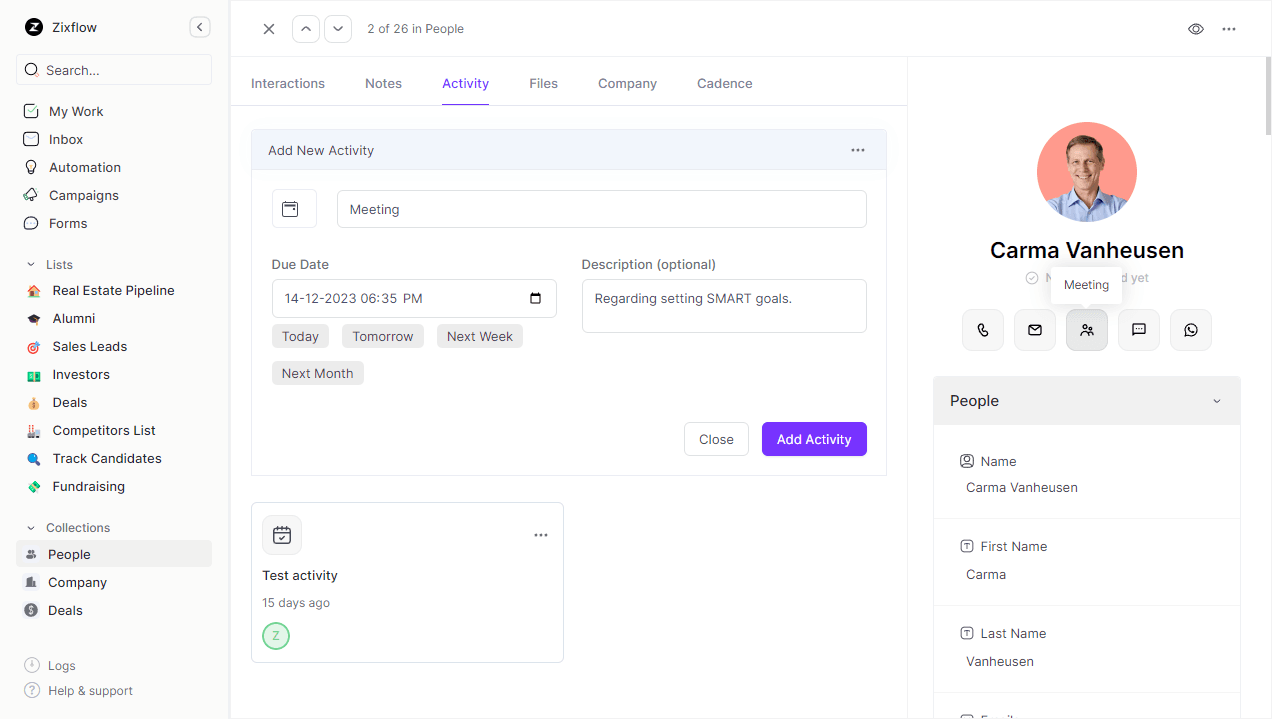
Increase social media presence
Social media presence is vital to have a strong community and increase your influence on the internet.
Here is an example of what your goal to increase your social media presence should look like
- Increase followers to 45k on Instagram by next quarter by posting 250 reels per week.
- Increase retention rate to 95% on YouTube shorts by next month by creating engaging videos.
Decrease social media response time
Social media is becoming an amazing platform for your business to connect with your community. Increasing response time on social media to answer customer queries quickly would result in happy customers. Here is an example of what such a goal would look like
- Decrease the time taken to reply to customer queries on Instagram to 30 minutes by next month.
- Decrease time taken to interact with posts the company page has been tagged to 40 minutes by next week to build a strong community
- Decrease the time taken to respond to sales queries regarding products to 20 minutes by next month to increase sales through social media.
Conclusion
So there it is, the 17 SMART sales goal to help you set up and achieve your targets with precision.
Now that you know what sales goals are, their importance, and how to create SMART sales goals. This alone however is not enough to find success. I mean what good is an amazing goal and plan that is not implemented?
You should put your plan into action to meet those goals, track your performance, and more importantly modify your performance if necessary to improve your sales process and achieve your sales goals. Don’t worry I know this all seems overwhelming but there is an amazing tool that would help you reach your goals which is Zixflow, It provides you with all the necessary like a visual pipeline to see your progress, and a comprehensive analytics tool to understand your flow.
